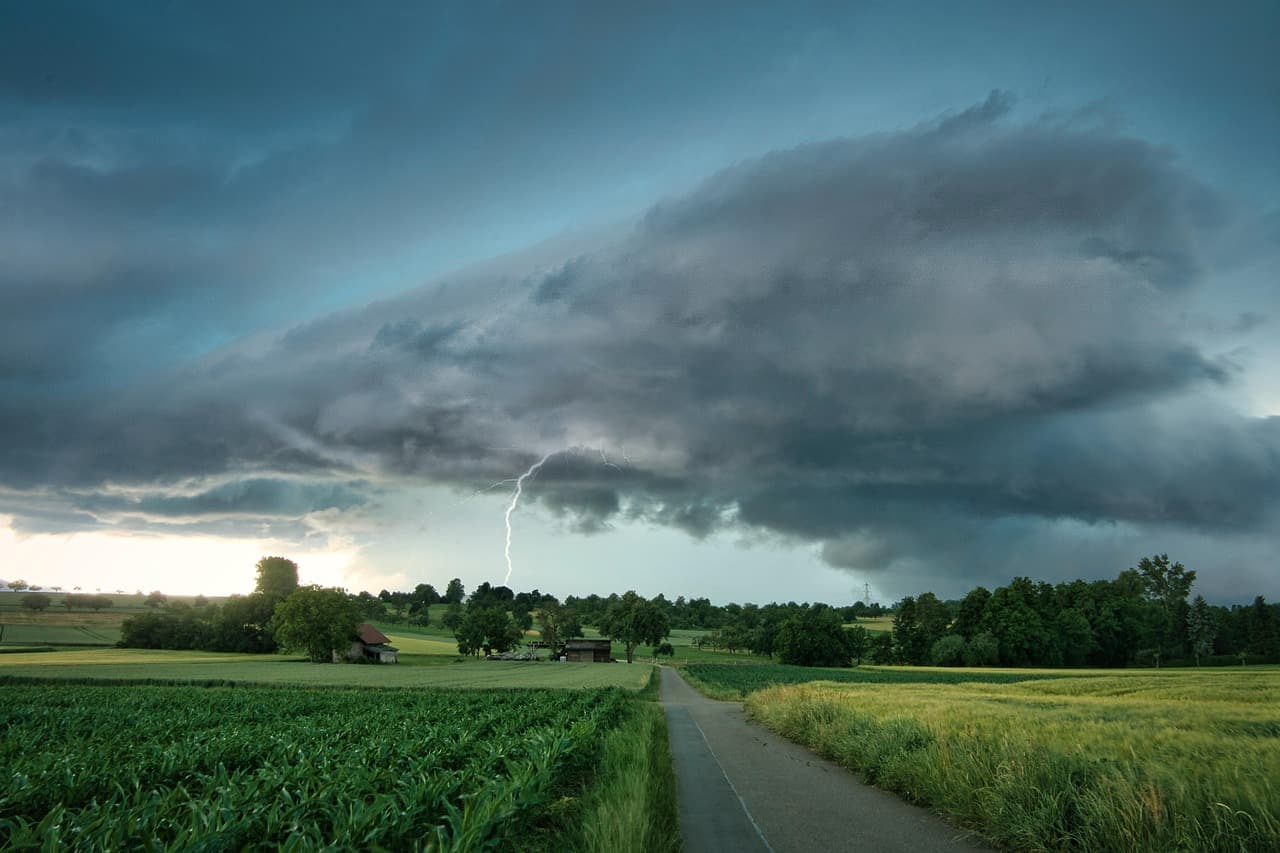When it comes to maintaining the trees on your property, understanding the distinction between emergency tree removal and standard tree services can save homeowners both money and potential hazards.
Whether you’re dealing with storm damage, tree removal, or planning routine tree maintenance, knowing when to call for urgent tree service versus scheduled tree work makes all the difference in protecting your property and budget.
Understanding Emergency Tree Services
Emergency tree services represent a critical response system designed to address immediate threats to property and safety.
Unlike regular tree care, these services operate under time-sensitive conditions where delay could result in significant damage or danger.
Immediate Response
Emergency tree removal companies provide 24/7 tree removal services to address urgent situations that simply cannot wait for regular business hours.
When a tree falls on a house during a severe storm or when you discover a tree leaning dangerously close to your home, rapid tree removal becomes essential for safety.
The emergency tree company dispatches trained crews equipped to handle various crisis scenarios, from a tree blocking driveway access to more serious situations like a tree on power lines.
These emergency tree service providers understand that timing is everything when dealing with hazardous tree removal situations.
After-hours tree removal services become particularly valuable during severe weather events. Hurricane tree damage and windstorm tree damage often create multiple emergency situations simultaneously, requiring immediate attention from an emergency arborist who can assess and respond to tree hazard situations quickly.
Mitigation of Hazards
Emergency storm cleanup involves more than just removing fallen trees. Professional emergency tree crews must evaluate the tree-falling risk in surrounding areas, identify dangerous trees that may pose additional threats, and safely remove unstable trees before they cause further damage.
Lightning-damaged trees present unique challenges that require specialized knowledge to assess their structural integrity.
When dealing with emergency tree hazards, certified professionals can determine which trees require immediate removal versus those that might be saved with proper care.
The tree hazard response process involves careful evaluation of each situation. Whether it’s a split tree trunk threatening to fall or broken tree limbs hanging precariously over a walkway, emergency tree cutting requires expertise to prevent additional property damage.
Specialized Equipment
Emergency tree removal often requires specialized tools and equipment not typically needed for routine maintenance.
Crane-assisted tree removal becomes necessary when dealing with large trees that have fallen in confined spaces or when tree-on-roof situations require precise extraction to minimize structural damage.
Bucket truck service and advanced rigging for tree removal allow emergency crews to safely access and remove trees in challenging positions.
The emergency tree tools used in these situations are specifically designed for rapid response while maintaining safety standards.
Tree climbing gear and safety harness tree service equipment enable arborists to work safely in dangerous conditions, whether removing trees in car situations or addressing trees that have caused structural damage to buildings.
Regular Tree Care and Maintenance
Standard tree services focus on maintaining tree health and preventing emergency situations through proactive care. This approach emphasizes long-term tree management rather than crisis response.
Preventative Maintenance
Routine tree maintenance forms the foundation of proper tree care. Regular tree trimming services and scheduled tree trimming help maintain tree structure and remove potential hazards before they become emergency situations.
Yearly tree inspection and tree health evaluation allow certified arborists to identify potential problems early.
This proactive approach can prevent many emergency tree service calls by addressing issues before they become critical.
Seasonal tree care addresses the specific needs of trees throughout the year. Spring tree trimming promotes healthy growth, while fall tree service prepares trees for winter weather. Pre-winter tree check services help identify potential storm hazards before severe weather arrives.
Health and Growth Optimization
Professional tree care goes beyond simple maintenance to optimize tree health and longevity. Tree pruning techniques used by experienced arborists promote proper growth patterns and improve overall tree structure.
Arborist services include comprehensive tree disease diagnosis and treatment of pest-damaged trees. By addressing these issues proactively, homeowners can avoid the need for emergency removal due to tree health deterioration.
Tree maintenance programs often include soil care, fertilization, and other treatments that strengthen trees against environmental stresses. This investment in tree health reduces the likelihood of tree failure during storms or other challenging conditions.
Long-Term Planning
Residential tree service and commercial tree services both benefit from strategic planning that considers the long-term impact of tree care decisions. Local tree experts can help property owners develop comprehensive tree management plans.
Urban forestry practices emphasize sustainable tree services that balance tree preservation with safety concerns. This approach considers factors like property line tree issues and HOA tree removal rules when developing maintenance strategies.
Tree care specialists often recommend replanting after tree removal to maintain property value and environmental benefits. This planning includes consideration of curb appeal, tree work, and landscaping after tree removal to ensure seamless property maintenance.
Comparing Emergency Services and Regular Care
The differences between emergency and standard tree care extend far beyond timing, affecting everything from cost to long-term tree health outcomes.
Reactivity vs. Proactivity
Emergency vs standard tree services represent fundamentally different approaches to tree care. Emergency services respond to immediate crises, while standard care prevents problems through regular maintenance.
The benefits of standard tree care include reduced emergencies, better tree health, and lower long-term costs. Scheduled vs unscheduled tree work allows for better planning and more thorough care of your trees.
Planned tree work vs urgent situations also allows for more careful consideration of tree preservation options. Emergency situations often leave no choice but removal, while preventive care may save trees through proper treatment.
Cost Implications
Emergency tree service cost typically exceeds standard rates due to the urgency and specialized requirements of crisis response.
Why emergency removal is costly relates to factors like after-hours labor, specialized equipment needs, and the immediate nature of the work.
Tree removal between emergency and standard services can be significant. Emergency tree service pricing often includes premiums for rapid response, weekend or holiday work, and the additional risks associated with urgent tree removal.
The average tree trimming cost for routine maintenance is generally more predictable and budget-friendly than emergency tree service fees.
Property owners can better manage tree service fees through regular maintenance programs rather than waiting for emergency situations.
Impact on Tree Health
Emergency vs regular arborists bring different focuses to tree care. While emergency arborists prioritize immediate safety and hazard removal, regular arborists focus on long-term tree health and preservation.
Tree risk management through regular care helps identify signs of tree failure before they become critical. Identifying hazard trees during routine inspections allows for planned removal or treatment rather than emergency response.
The difference between arborist and tree service companies often becomes apparent in their approach to tree health. Certified professionals emphasize tree care tips and education to help property owners maintain healthy trees and avoid emergency situations.
Insurance and Liability Considerations
Understanding insurance coverage for tree-related incidents helps property owners make informed decisions about tree care investments.
Homeowners’ insurance tree removal coverage varies significantly depending on the circumstances surrounding tree damage.
Who pays for a fallen tree depends on various factors, including the tree’s location, the cause of failure, and insurance policy details.
Tree damage liability can become complex when a neighbor’s tree falls on your property or when trees cause damage to adjacent properties.
Insurance for tree services becomes particularly important during emergency situations. Tree damage insurance claim processes often require documentation of the emergency nature of the work and proof that the damage resulted from covered perils.
Tree falls in storm coverage typically applies to emergency situations, but may not cover tree removal legal issues related to preventable situations. Property owners should understand their coverage limitations when making decisions about tree care timing.
Environmental and Community Considerations
Responsible tree care extends beyond individual property concerns to encompass broader environmental and community impacts.
Eco-friendly tree removal practices and sustainable tree services help minimize environmental impact while addressing safety needs.
Tree recycling and mulch from tree removal programs turn removed trees into useful materials rather than waste.
Many tree service companies now offer green tree services that emphasize minimizing tree impact through responsible disposal and recycling practices.
City emergency tree help often coordinates with local tree removal contractors during major storm events. These partnerships ensure an efficient response to widespread tree emergencies while maintaining community safety standards.
Choosing the Right Service Provider
Selecting appropriate tree care providers requires understanding the differences between various service levels and company capabilities.
Best tree removal in your area often includes companies that offer both emergency response and routine maintenance services.
Licensed arborists in your location should carry proper insurance and maintain current certifications. Tree service reviews from previous customers provide valuable insights into company reliability and service quality.
When you need a tree removed fast, emergency-ready tree service companies with 24/7 availability become essential.
However, for routine needs, top-rated emergency tree company services may not be necessary or cost-effective.
Prevention and Preparation Strategies
Homeowner guide to tree safety emphasizes the importance of understanding tree risk checklist items and signs tree needs immediate removal. Preparing for tree emergencies through regular inspection and maintenance reduces the likelihood of crisis situations.
Tree care tips from experienced professionals help property owners recognize dying tree symptoms and tree stress indicators before they become dangerous. Learning when to remove a tree versus when treatment might be effective saves both money and trees.
DIY vs professional tree service decisions should consider safety factors and the complexity of the work involved.
While some basic tree maintenance can be performed by property owners, emergency tree removal and complex tree work require professional expertise.
Final Wording
The choice between emergency tree removal and standard tree services ultimately depends on timing, circumstances, and long-term property management goals.
While emergency services provide essential crisis response capabilities, investing in regular tree maintenance offers better value and tree health outcomes over time.
Property owners who prioritize routine tree maintenance typically experience fewer emergency situations and enjoy healthier, more attractive trees.
However, when emergencies do arise, having access to qualified emergency tree service providers becomes invaluable for protecting property and ensuring safety.
Understanding these key differences helps property owners make informed decisions about tree care investments, whether planning seasonal maintenance or responding to urgent tree hazards.
By balancing preventive care with emergency preparedness, homeowners can maintain beautiful, safe trees while minimizing unexpected costs and property damage risks.

